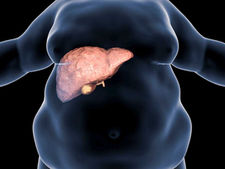
Coronary Artery Disease
What is Coronary Artery Disease?
All tissues in our body need oxygen and nutrients to survive. These vital substances are transported to the farthest points of our body through blood. The task of our heart is to ensure the circulation of blood within the circulatory system. A person's heart beats 60 times per minute and pumps approximately 5.5 liters of blood to the body every minute.
This means that approximately 8 tons of blood is pumped into our body every day. Our heart, located inside the rib cage, behind the sternum (bone of faith), consists largely of muscle tissue. The arteries that bring blood rich in oxygen and nutrients that our heart needs to function properly, that is, the arteries that feed the heart itself, are called coronary arteries. Coronary arteries are the first branches of the aorta, the main artery of our body, after it leaves the heart.
For better understanding, if we compare our body to a car, our heart is the engine of that car and the coronary arteries are the fuel hoses of that engine. Atherosclerosis that causes blockages or stenosis in fuel hoses is called "coronary artery disease". The cause of arteriosclerosis is cholesterol-containing plaques that accumulate on the walls of the coronary arteries over the years. Depending on the severity of the stenosis caused by these plaques, some patients do not experience any complaints, but as the stenosis progresses, complaints such as chest pain and/or shortness of breath, which occur during work or with emotional stress and relieve with rest, may occur. Patients with coronary artery disease are candidates for a heart attack later in life. The cause of a heart attack is the sudden rupture of the cholesterol plaque in the coronary artery and the sudden interruption of blood flow in the vessel, which is already narrowed due to the clot sitting on it. In other words, the contraction (function) of the heart tissue (motor), which cannot receive the blood (fuel) brought by the coronary artery (fuel hose), suddenly fails. If blood flow to the heart muscle, which can withstand anemia for a limited time, cannot be restored in a short time, the muscle tissue in the affected area begins to die irreversibly. The closer the blockage in the coronary artery is to the aorta (since a very large heart tissue cannot receive blood), the more likely it is to be life-threatening. You can visualize this situation as follows. If we compare the coronary artery system to the pipes that carry water from the dam to the city, the main pipe coming out of the dam carries water to our homes by branching and decreasing in diameter as it distributes to the neighborhoods. While a blockage in the pipe that brings water to our apartment will only cut off the water flow to the houses in our apartment, a blockage in the main pipe coming out of the dam will leave the whole city without water and chaos will ensue. Listen to Your Heart Deaths due to cardiovascular diseases still rank first all over the world. Listen to your heart, do not ignore your complaints. Even if you have no complaints; If there is a sudden death in your family with unknown cause at an early age, If your blood relatives have coronary artery disease, If you have diabetes that is high enough to require the use of insulin, If you have high cholesterol, If you smoke, If you have had a stroke or partial paralysis, If you have leg artery disease, in terms of coronary artery disease You may also be at risk.
See your cardiologist as soon as possible. Tomorrow may be too late.
How is the Treatment Method Decided for Coronary Artery Disease?
A committee has been established in our hospital to assist patients with your condition in making decisions regarding further diagnosis and treatment. This committee, called "Yücelen Hospitals Heart Team", includes cardiology, cardiovascular surgery, anesthesia, internal medicine, chest and occasionally neurology experts. With an approach focused on the patient, not the disease, the Heart Team evaluates all aspects of the patients brought to the board and offers the most appropriate and most beneficial treatment method to the patient by mutual decision in the light of national and international guidelines. In this way, it aims to help the patient make a decision regarding his own treatment.
How Does the Heart Team Decide Which Treatment Method Is Best for the Patient?
Cardiac team members decide based on the following parameters when determining the treatment method to be recommended for a patient with coronary artery disease: The patient's complaint, Additional medical problems of the patient, if any, Presence of additional heart problems that cannot be resolved by any other method other than surgery, The contraction power of the heart, The risk of surgery or intervention. The high risk of life, the location and number of stenosis in the coronary arteries, the degree of complexity of the coronary anatomy, the expected life expectancy of the patient, the probability of success of the intervention and the risk of complications, whether all coronary stenosis of the patient can be intervened with the procedure to be performed.
FOR INFORMATION AND APPOINTMENT, YOU CAN LEAVE YOUR NUMBER OR ASK OUR EXPERTS
YOU CAN LEAVE YOUR NUMBER FOR INFORMATION AND APPOINTMENT AND ASK QUESTIONS TO OUR EXPERTS



-04.png)
-06.png)
-05.png)
-08.png)
-07.png)























